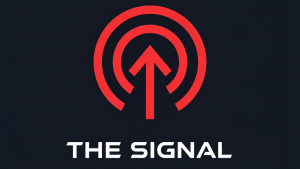The Market’s Roar: Measuring Intensity with Relative Volume (RVOL)
Summary (TLDR)
Relative Volume, or RVOL, is a ratio that compares a security’s current trading volume to its average volume over a specific period. It is used by traders to quickly identify stocks with unusually high or low activity, which can signal a significant event or strong interest from market participants.
Introduction
If volume is the loudness of the market’s voice, Relative Volume (RVOL) is the tool we use to notice when someone is shouting. A stock trading one million shares might seem active, but what if it normally trades ten million? In that case, its activity is quite subdued. Conversely, a stock that normally trades only one hundred thousand shares and suddenly trades one million is making a tremendous amount of noise. RVOL provides this crucial context, measuring a stock’s current activity not in absolute terms, but relative to its own normal behavior.
The Core Concept (Explained Simply)
Imagine a quiet river that typically flows at a gentle, steady pace. This is its average volume. One day, after a storm in the mountains, the river’s flow doubles or triples in speed and intensity. The absolute amount of water might not be as much as a major river like the Amazon, but for this specific river, the change is dramatic and significant.
RVOL is the measure of that dramatic change. It is a simple ratio calculated as:
RVOL=Average VolumeCurrent Volume
- An RVOL of 1.0 means the stock is trading at its normal, average volume. The river is flowing as usual.
- An RVOL of 3.0 means the stock is trading at three times its normal volume. The river is flooding its banks.
- An RVOL of 0.5 means the stock is trading at half its normal volume. It’s a day of unusual quiet, perhaps a drought.
By using this ratio, traders can instantly see which stocks are experiencing a surge of unusual interest, regardless of their absolute trading volume.
From Theory to Practice
Traders, especially those focused on short-term moves, rely on RVOL as a primary scanning and filtering tool. It helps them find the action.
- Finding Stocks “In Play”: The most common use of RVOL is in real-time market scanners. A trader might set a filter to only show stocks with an RVOL greater than 2.0. This immediately narrows the entire market down to a manageable list of securities that are experiencing unusual activity, often due to news, earnings reports, or other catalysts.
- Confirming Breakouts: A breakout is when a stock’s price moves above a key resistance level. For this move to be considered strong and legitimate, it should be accompanied by a surge in volume. A trader seeing a price breakout with an RVOL of 4.0 or higher has much more confidence that the move is supported by a large number of participants and is not a false signal (a “fakeout”).
- Gauging Fading Momentum: If a stock makes a new high but the RVOL is low (less than 1.0), it can be a red flag. It suggests that fewer participants are interested in pushing the price higher, and the trend may be running out of energy.
A Brief Illustration
Let’s say Stock ABC typically trades about 500,000 shares by 11:00 AM each day. On this particular morning, a positive news story is released. A day trader runs their market scanner at 11:00 AM and sees that Stock ABC has already traded 2.5 million shares.
The RVOL would be calculated as 2,500,000 (current volume) / 500,000 (average volume), resulting in an RVOL of 5.0. This number instantly tells the trader that something significant is happening with Stock ABC. The high relative volume confirms that the price movement is backed by intense interest, making it a prime candidate for further analysis.
Why It Matters
- Context is Key: RVOL provides essential context. It highlights unusual activity that would be missed by looking at absolute volume alone.
- Efficiency: It allows traders to quickly sift through thousands of stocks to find the few that are truly “in play” on any given day.
- Confirmation Power: High RVOL adds a layer of confirmation to trading signals, increasing a trader’s confidence in the strength and validity of a price move.















